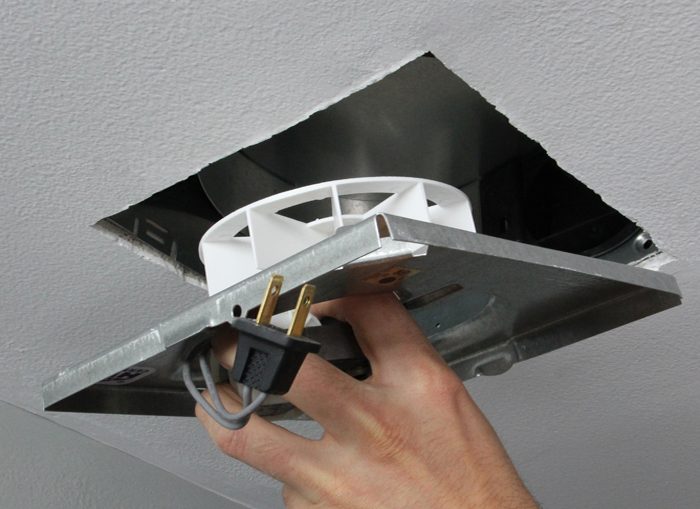Our house may need an exhaust fan. It is essentially an electrically-powered ventilation device that draws out stale interior air and draws in fresh air from the outside. Strategically placed exhaust fan could improve the overall indoor air quality and much of the bad air can be easily removed from our living space. Here are types of exhaust fans that we could choose:
- Ceiling-mounted exhaust fan: As its name directly suggest, these fans are directly installed in the ceiling. Stale interior air is expelled through the roof. The fan is connected to a ducting system and there’s another external vent that accelerates the flow of stale air.
- Inline exhaust fans: These fans are usually mounted in-between ducting system. It is useful for ventilating areas that don’t have space or clearance for ceiling mount fan. Exhaust fans should be placed between ducting system and stale air should be able to travel through the ducting system. In order to reduce noises, it’s recommended to use insulated flex ducts.
- Wall-mounted exhaust fans: These fans are installed directly on walls on the exterior side of the wall. This allows stale, interior air to have a very short and direct route to the exterior. It’s the simplest way to install an exhaust fan and we don’t need any kind of ducting.
- Combination exhaust fan: These fans are available as combination units. Other than the standard exhaust fan, we could also get illumination and heater components.
- Exterior exhaust fans: Instead of pushing stale air from the inside, these fans are installed entirely outside the house to pull stale air from the outside. One benefit of using this type of fan is that the noise will remain outside our house.
- Kitchen exhaust fan: The cooking process often produces vapor, odor and smoke that need to be expelled outside the house. The fan also reduces the moisture level inside the house and helps to remove excess heat.
Regardless of the type of our fan, it provides the same benefits of effectively ventilating our living space. Without enough ventilation, it’s likely that the interior of our house is filled with disease-causing pathogens and various harmful contaminants. Pollutants such as grease, paint fumes, dust mites, asbestos, lead, pet dander, smoke and harmful vapor can be removed effectively. Other than cooking, other activities, such as bathing, washing, smoking, and house renovation require proper venting. Excess moisture produced by washing and bathing activities will also need to be removed with proper ventilation. Improper ventilation could also cause a variety of problems, such as allergies, asthma, skin rashes, nose bleeds, nausea and others.


Leave a Reply